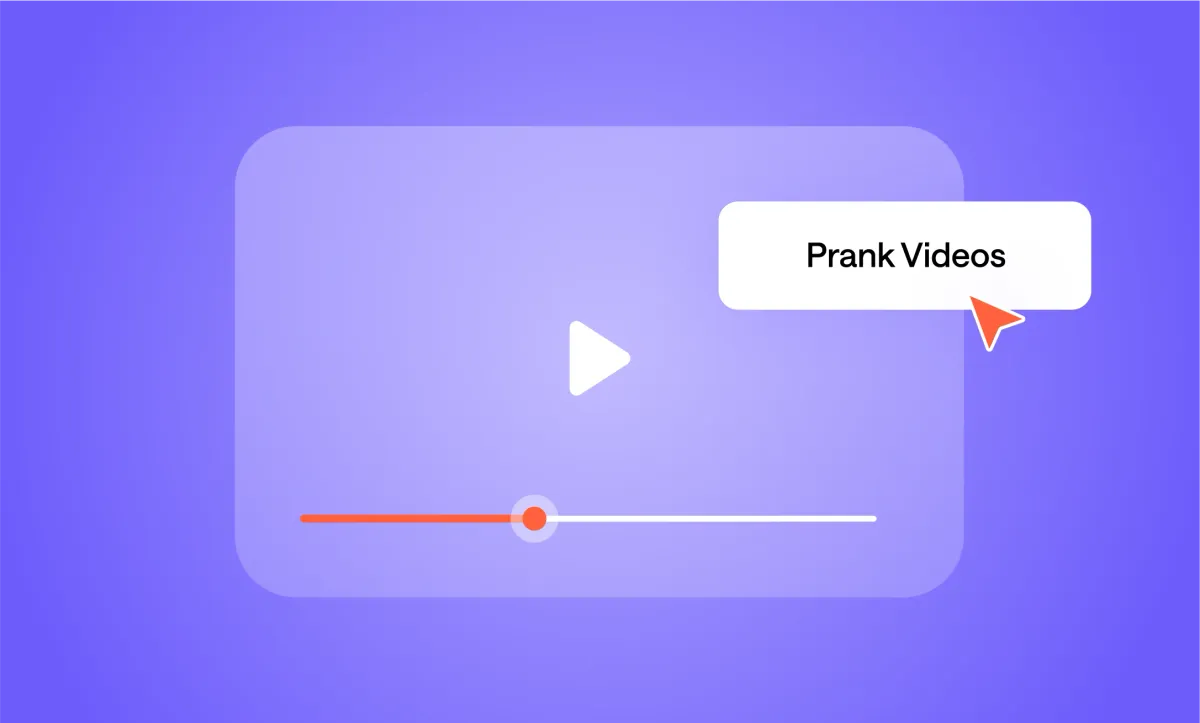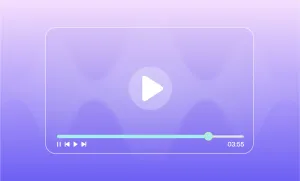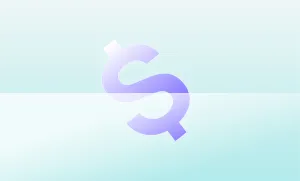Have you ever watched a video and wished you could read along with what's being said?
Maybe you've struggled to understand a speaker with a heavy accent, or found yourself in a noisy environment where it's hard to hear the audio clearly. Or perhaps you're looking for a way to make your video content more accessible and engaging for a wider audience.
If any of these situations sound familiar, then video transcription might be just the solution you're looking for!
Table of Contents:
– What is video transcription?
– Why do we need transcription?
– Main transcription types
– Benefits of video transcription
– How to transcribe video to text
– How reliable is automatic transcription?
– Transcribe video to text with Podcastle
What is video transcription?
First off, let's define our terms. Video transcription is simply the process of converting spoken words in a video into written text. It's taking all the audio – every word, every "um," every laugh – and typing it out into a readable format.
Think of it like creating subtitles or closed captions for your video, but in a separate text document. The end result is a complete, word-for-word written record of everything said in the video.
Why do we need transcription?
Turning video into text seems like a hefty chore, so why do it? Well, the answer is simple: sometimes your audience finds it hard to follow your speech, so having the written version helps them out.
The subtitles you see on YouTube videos, for instance, serve that purpose and are generated through transcribing. As a result, it makes your video accessible in a whole new way. Now, it can be read, scanned, searched, translated, and enjoyed by a much wider audience.
Of course, you can go ahead and transcribe your file manually by writing down every single word, but we know how incredibly time-consuming that can be. So we'll tell you how to work more efficiently by transcribing your files using AI-powered technology. But before that, let's go through the…
Main transcription types
When it comes to transcribing video or audio content, there are a few different options to consider. In any case, the type of transcription you choose will depend on how precise you need the final text to be and what you'll be using it for.
Let's break down the main types.
1) Verbatim transcription
Verbatim transcription, also known as "word-for-word" transcription, is exactly what it sounds like - every single word spoken is transcribed, exactly as it's heard. This includes all the "ums", "ahs", false starts, repetitions, and any other filler words or sounds. Even if the speaker makes a grammatical error, it stays in the transcript.
2) Intelligent verbatim transcription
Also called clean verbatim transcription, this type gives you the best of both worlds. You still get an accurate representation of what was said, but without all the extra filler words and sounds that can clutter up the transcript.
Intelligent verbatim transcription can edit out coughs, stammers, and "you know"s. They'll also fix any glaring grammatical errors and remove excessive "likes" or "ums". The end result is a more readable, fluid transcript that still preserves the meaning and intent of the original audio.
3) True verbatim transcription
True verbatim transcription takes things much further than regular verbatim. In addition to transcribing every word, true verbatim also includes notes on any non-verbal sounds, like laughter, applause, or background noises.
For example, if there's construction noise in the background of an interview, the transcriptionist would make a note of that in the transcript, usually in brackets like this: [construction noise]. Or if the speaker cracks a joke and the audience laughs, that would be noted as [laughter].
True verbatim is often used for film and television scripts, focus groups, or any situation where those non-verbal elements are important to fully capture the context of what's being said. It's the most comprehensive type of transcription, but also usually the most expensive and time-consuming.
Benefits of video transcription
If you wonder why you should spend additional time and effort to make a video transcription, here are a couple of reasons:
1) Make your content easier to learn and remember
Transcribing video to text is an easy, yet powerful way to incorporate visual learning across your content. Some people simply retain information better when they can see it written down, and with video transcription, your viewers get the chance to read along with the spoken words, which can reinforce key points and make the content stick in the viewer's mind.
This is especially useful for complex or technical topics. If a viewer is struggling to keep up with a fast-paced explanation or a speaker with an accent, having the transcript as a reference can help them pause, re-read, and fully grasp the concept before moving on.
Transcriptions are also a game-changer for language learners. By reading the words as they're spoken, viewers have another way to pick up on proper pronunciation, grammar, and sentence structure.
2) Share content that's accessible to everyone
Unfortunately, not everyone can hear your audio. In fact, over 360 million people worldwide have hearing disabilities. That's a huge potential audience you might be missing out on, so adding captions or a written transcript opens up your content to a whole new group of people who are eager to enjoy your work!
There are also those who can hear perfectly well but might prefer to read along with your video. Maybe they're in a quiet library or on a noisy train. Or maybe they just learn better by reading. Whatever the reason, having a transcript gives them the flexibility to engage with your content in the way that works best for them.
In this way, you will also comply with legal regulations, as anti-discrimination laws in many countries require you to provide different social groups with equal access to information.
3) Gain a wider reach with SEO
Here's a secret: search engines are brilliant, but they're not great at watching videos. They can't listen to your carefully crafted script or appreciate your stunning visuals. But what they can do is read and index your video transcriptions.
This is one of the major benefits of transcription because you give search engines a valuable piece of the puzzle: text that they can analyze to understand what your content is about. This helps them determine when to show your video in relevant search results, and will ultimately promote your podcast.
To truly take advantage of this, you can be two steps ahead and research the keywords and phrases that your target audience is searching for, and make sure to include them naturally in your video script. Your audience can then land on your page, and quickly scan the text to see if your video meets their needs before committing to watching the entire thing.
How to transcribe video to text
Simply typing anything you hear in the video sounds pretty straightforward. However, as we've mentioned, it is a time-consuming task that requires patience, attention to detail, and high language proficiency.
So, let's categorize the options you have for transcribing the video: manually and automatically.
Manual transcription
If you are fond of detailed manual work and know the transcribing language well enough, you can go ahead and do it manually.
But if you choose to do transcription manually, make sure you clearly understand how much time it will take for you. Usually, experienced specialists transcribe 1 hour of video in 2-3 hours, depending on how noisy the video is, the number of speakers, and the audio quality. For instance, if you struggle to hear a speaker, or two speakers are talking over each other, these hurdles will likely require more time to transcribe.
If you are a newbie in this field, set longer deadlines. Estimate approximately 4 or 5 hours for transcribing each hour of the audio.
Automatic transcription
If you don't want to get into much hassle and want to get your transcription in less than a minute, you can use automatic transcription with a voice-to-text tool. Not only is this fast and convenient, but it's also inevitable in some cases.
For example, if you don't know the language spoken in the video or need transcription for a 7-8 hours' video as soon as possible, you have no other choice than to leave it to the AI.
How reliable is automatic transcription?
While technology is constantly advancing, it's important to remember that automatic transcription isn't perfect. Even the most sophisticated AI-powered tools can make mistakes, especially when it comes to complex terminology, unique accents, or background noise.
But don't let that discourage you! Today's automatic speech recognition (ASR) systems are incredibly impressive. In most cases, you'll find that the automatically generated transcript is highly accurate, with only minor edits needed here and there.
To ensure top-notch transcription quality, it's always a good idea to give the text a quick once-over yourself or run it through a grammar checker. This way, you can catch any subtle errors or inconsistencies that the ASR system might have missed, particularly when it comes to industry-specific jargon or newly coined terms.
So why not give it a try?
Transcribe video to text with Podcastle
With Podcastle, you can effortlessly transcribe any audio or video files into text in a matter of seconds. All you need to do is:
Step 1) Sign up to Podcastle.ai, which will automatically take you to the project's dashboard.
Step 2) Create a project and drag your video file into the dashboard.
Step 3) Right click on your file and select transcribe.
Step 4) Select the number of speakers and choose between 5 different languages. You can also choose to detect filler words if you wish.
Step 5) Once the file is transcribed, you will see the text on the right hand side in our text editor.
Step 6) Finally, if everything looks good, you can export your video transcript in doc or pdf format.
Just like that, you have a flawless transcript of your video! And the best part? You can also turn these transcripts into unique narrations using our AI voices or voice cloning features. Just click "Generate" on the Podcastle dashboard, paste your transcript into our text editor, and select between 30+ different voices to create a voice over fit for any repurposing needs.








